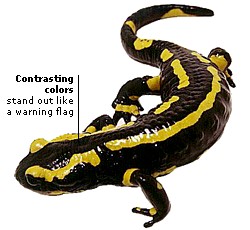DK Nature: Amphibians
Frogs, toads, salamanders, newts, and the strange, wormlike caecilians are all amphibians—a group of small, generally moist-skinned vertebrates. The word amphibian, meaning “living two lives,” refers to the fact that most amphibians spend part of their lives in water and part on land.
Adult frogs and toads have four legs and no tail. Although there is no real scientific difference between them, frogs are generally considered to be moist-skinned, hopping animals and toads dry-skinned amphibians that walk.
Yes, they can. Oxygen from the air or water can pass through the moist skin of amphibians to enter the blood. Many young amphibians also have feathery gills to extract oxygen from water, but later lose these and develop lungs. Some axolotl salamanders keep their gills throughout life.
Most amphibians hop or crawl to the safety of the nearest water when danger threatens. Some also have glands in their skin that ooze poisonous or foul-tasting fluids when they are attacked. The common toad and a few other species confuse predators by puffing themselves up to look bigger.
Caecilians are long, slender amphibians found in hot countries. Almost all live underground, where they burrow through the soil using their wedge-shaped heads. Like other amphibians, caecilians are predators that hunt worms, insects, and other small soil-dwellers. Most caecilians are legless, but some have tiny limbs.
All adult amphibians are meat-eating predators. Their prey includes insects, slugs, worms, and even small mammals, such as mice. Aquatic amphibians eat water snails, insects, and small fish. Many amphibians hunt at night, using their sharp sight, smell, and hearing to track victims.
The moist skin of most amphibians is not waterproof, so they live in damp places to keep from drying out. Many amphibians lay their soft, jelly-covered eggs in water, which is known as spawning. Their young, called TADPOLES, grow up in the water and come onto land only when they mature.
Color helps amphibians find mates and hide from predators and prey. Some species are brightly colored to tell predators that they are poisonous. Others are camouflaged to blend in with their surroundings.
| Amphibians are the most ancient class of land-living vertebrates. They are split into three orders. |
| Caecilians make up the order Apoda. There are around 170 living species. |
| The order Urodela contains all newts and salamanders. There are about 360 species. |
| The largest order, Anura, contains the frogs and toads. All together, there are around 3,500 different species. |
Most amphibians hatch as water-dwelling larvae called tadpoles. With big heads, long tails, and no limbs, they look more like fish than amphibians. As they grow older, the tail shortens and limbs develop. Finally, they start to resemble miniature adults.
Most tadpoles extract oxygen from fresh water using internal gills and feathery external gills on their necks. As they mature, they develop lungs, and their gills normally shrivel up. Unlike their adult forms, many tadpoles are herbivorous, feeding on plants that they scrape off pond rocks using rasping teeth.


